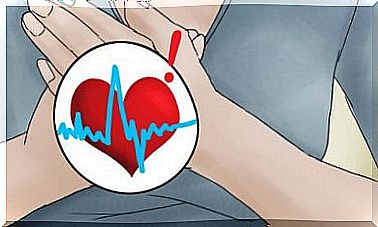Erythrocyte Sedimentation Rate: The Procedure

Clinical lab tests are very important in medical care. Sometimes they are the only way to determine the presence of a disease. One of the most common tests is the erythrocyte sedimentation rate.
Also known as EBS, this test is a test that measures the rate at which red blood cells settle at the bottom of a test tube. A higher or lower speed than normal can indicate the presence of various medical problems.
Under normal circumstances, the erythrocytes or red blood cells have a negative charge. As a result, they repel each other at a settling rate of 10 millimeters per hour. However, this may vary depending on the subject and his/her lifestyle.
Reasons to get an EBS done
The erythrocyte sedimentation rate is a test that helps the specialist guide and allows him to detect the existence of diseases. In that sense, it can be useful in the following situations:
- fever of unknown origin
- some forms of arthritis
- symptoms affecting the muscles
However, the doctor must analyze the patient’s symptoms along with the results of the laboratory examination. That way he can make a certain diagnosis. In addition, specialists can use the EBS as an important diagnostic criterion for two diseases:
- polymyalgia rheumatica
- temporal arthritis
Both diseases are very rare and usually only occur in patients older than 50 years.
Polymyalgia rheumatica is an inflammatory disease that affects the proximal muscles in the extremities and trunk, causing pain and limiting range of motion. Temporal Arthritis Causes:
- headache
- impaired vision
- fever
- jaw problems
- anemia

How should I prepare for this test?
It is a fairly simple and quick test that does not require any special preparation. If you only get an erythrocyte sedimentation rate test, you don’t have to fast, but if the doctor is doing other analyzes at the same time, you should take the appropriate measures.
To be able to do the test, a specialist takes venous blood with a syringe. This must be taken from the arm. This may also mean that you may feel some minor pain or discomfort during the test, which can sometimes last for the rest of the day. However, it should not affect your ability to perform other daily activities.
The blood analysis part of the test is very simple and will usually follow the Westergreen method where specialists mix 2 ml of blood with 0.5 ml of citrate in a test tube and then measure the distance without erythrocytes.
After an hour, they measure the distance between the red blood cells again, in millimeters, to determine the rate at which they descended.
What does a high erythrocyte sedimentation rate mean?
When the sink rate is above normal values, this may indicate the presence of diseases that develop with inflammation and some neoplasms. According to some studies (link in spanish), the rate increases over a 24-hour period and usually returns to normal levels only after it has subsided.
These kinds of diseases increase the concentration of various proteins in the blood plasma. Each of these proteins, especially fibrinogen, affects the surface charge of the red blood cells, causing them to descend at a faster rate.
However, several situations that increase blood fibrinogen, such as pregnancy, diabetes or end-stage renal failure, can increase the erythrocyte sedimentation rate.
Among other reasons we can mention the following:
- anemia
- macrocytosis (when the red blood cells are larger than normal)
- acute bleeding
- heart attack
- lymphoma
- metastatic carcinoma (stage four or advanced cancer)
What does a low erythrocyte sedimentation rate mean?
Usually, a low erythrocyte sedimentation rate does not have much medical relevance. In this sense, the level can reach 0 mm in normal patients and so is usually not a cause for concern among specialists.
However, a low erythrocyte sedimentation rate, between 0 and 3 mm, is associated with several health problems. Of these, the following stand out:
- polyglobule or high red blood cell count
- malformations in red blood cells
- hyperviscosity syndromes
- to smoke
- heart failure
As if that weren’t enough, infectious diseases like dengue can slow the sedimentation rate slightly. This is shown by a study in which the EBS in patients with this disease was significantly lower than in others with acute fever.

A simple but effective test
As you can see, the erythrocyte sedimentation rate is not a complicated test, but it is very useful in looking for the presence of diseases that develop with inflammation. It can guide the doctor and help make a correct diagnosis.
As far as the patient’s role is concerned, there is no special preparation that he must do before undergoing the test. In addition, after the procedure, he can continue his daily activities without discomfort!









